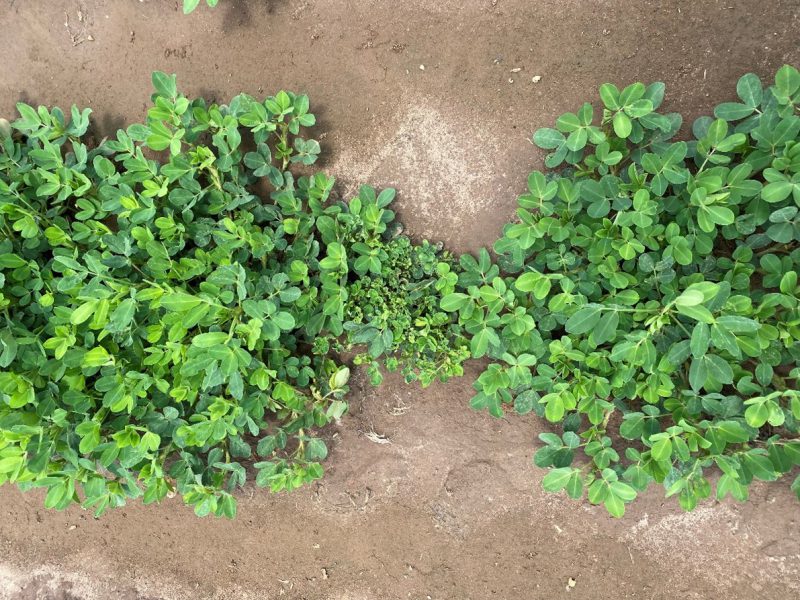
Tomato Spotted Wilt Virus is a more serious disease issue in peanut fields this year. Credit: Barry Tillman, UF/IFAS
So far in June 2022, I’m noticing more spotted wilt in the Suwannee Valley and Gainesville areas than usual. I’ve found it in early planted peanuts in the Panhandle of Florida too, but that’s more typical. What’s rare is finding spotted wilt at similar levels in our plots in Citra, FL and Live Oak, FL. With the Citra plots planted on March 8 and Live Oak on April 5, the stands are old enough to see the effects of the stunted plants among our plots. It’s these stunted plants that cause most of the yield loss, because they nearly stop growing and they produce few pods.
Plants that are stunted this early in the season are evidence of early infection and potentially more severe effects on yield. The good news so far is that the frequency of stunted plants appears to be relatively low – less than 5%. If that low disease incidence holds, then the impacts on yield are likely to be limited and hopefully that is the case for 2022.
If you are seeing more spotted wilt than in the past, you might consider changing some production practices for next year. Remember that everything that can be done to combat spotted wilt is done at planting. This includes choosing a more tolerant variety, planting in mid-May, using Thimet in-furrow, planting twin rows, and achieving a plant stand of at least 3 plants per foot of row.
–
For more information on this subject, use the following publication links:
Management and Cultural Practices for Peanuts
Tomato Spotted Wilt Virus on Peanuts
Thrips & TSWV Management: This is Your One Chance, Don’t Mess Up
- FloRun™ ‘725’ – A New High Yielding, Disease Resistant Peanut Variety - April 4, 2025
- Don’t Lean Too Hard on Your Peanut Variety for Disease Resistance - June 28, 2024
- ‘Arnie’ – A New Peanut Variety Released by the University of Florida - February 2, 2024
